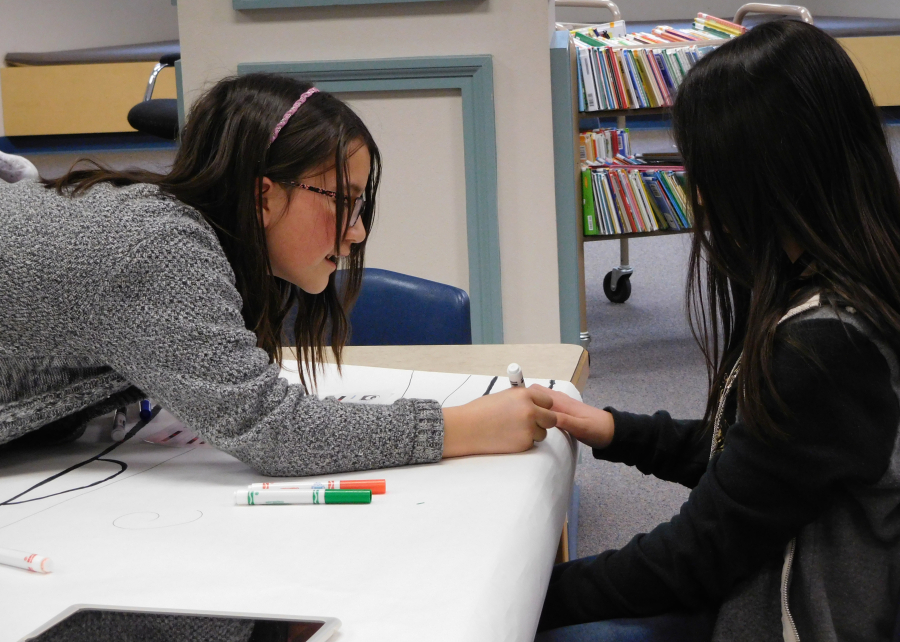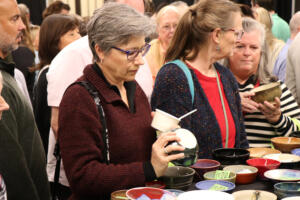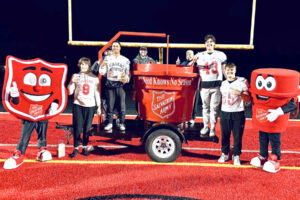When students gather in the Gause Elementary School library for coding club, they are ready for fun.
These fourth and fifth-graders aren’t thinking about the fact that they are, in essence, writing a computer program.
Instead, the focus is on creativity. Students lean over giant paper maps, which are made using different colored markers to draw sets of lines and dashes. Some include cartoon doodles or smiling family members next to the drawings.
Once the trail is complete, they send tiny robots, called Ozobots, to follow the commands they have drawn. It reads colors through a sensor and responds with different movements, such as forward, backward, spin, light up and speed.
Fifth-grader Jake Kettleson has been participating since the program began in the fall.
“My parents wanted me to sign up, so I tried it out and had a lot of fun, and decided to continue,” he said. “I really like to play with the Ozobots. It is really fun.”




